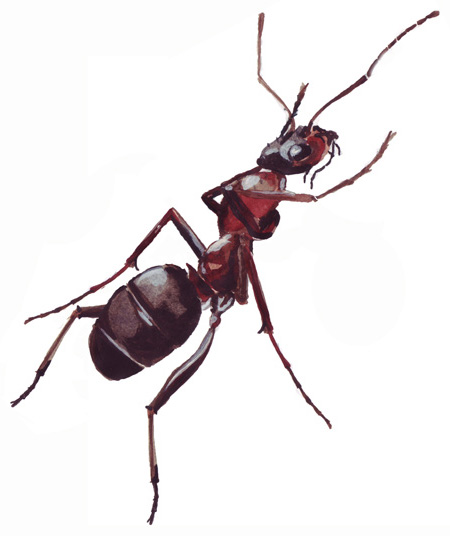
Natural History of Scilly



Ice Age: Scilly, Britain and mainland Europe were joined. The ice sheet reached northern tip of Scilly. (For geological evidence of glaciation and tundra conditions in Scilly, visit the Geology Tour page). Grasses, sedges, lichens, the dwarf pansy and other tundra wildlife thrived in the arctic conditions. There is good DNA evidence that one endemic species, the St Martins Ant, dates back this far. Whether the Scilly shrew is also an Ice Age relic is still a mystery; it may, like many species unable to live in these cold arctic conditions have survived in refugia further south.
As the climate warmed, some species returned across the land bridges from their refugia in southern Europe. Species spreading north to that part of the landmass that was to become Scilly included field grasshoppers, meadow brown butterflies and oak trees. (For more on DNA analysis of Pleistocene and post-glacial biogeography, see Schmitt 2007 and Petit et al 2002 'Identification of refugia and post-glacial colonisation routes of European white oaks').
Sea levels rose, the Scillonian landmass became cut off, first from mainland Europe and then from Britain, possibly as early as 10,000 BC. Marine wildlife and salt-tolerant plants colonised the shores. Most of the islands were joined together and much of the Scillonian landmass was wooded. Remnants of a submerged forest have been seen on the sea bed between St Marys and Samson. Evidence of a transition from herb-rich grassland to mixed deciduous woodland comes from analysis of intertidal peaty deposits at Porth Mellon, St Marys and Par beach, St Martins (Scilly Historic Environment and Research Framework). At this time, Britain was still linked to mainland Europe through Doggerland, now Dogger Bank, in the North Sea.
Neolithic human settlers arrived in Scilly, bringing sheep, goats, cattle and grains, clearing some of the woodland and eating the wild deer.
Rising sea levels divided Scilly into the group of islands seen today. Romans arrived in Scilly and introduced the European rabbit into Britain. The earliest record of rabbits in Scilly is dated 1136 AD
From late medieval time, many plant species ‘wool aliens’ arrived in Britain as seeds entangled in the fleeces of Spanish Merino sheep. Compact brome and Cretan mallow are probably wool aliens. Although described in the Biological Records Centre as introduced to cultivation in 1723, the Cretan mallow is listed in Lousley's census of wool aliens, and its distribution around ports mills and factories supports its unintentional introduction in imported sheep fleeces.
The Smith family brought botanical specimens back from California, South Africa and New Zealand to plant on Tresco. Many of these plants, such as Monterey pine, Agapanthus, Pittosporum and Hottentot fig, and some stowaways such as Stick insects have naturalised in Scilly.
Pacific seaweed Sargassum muticum is accidentally introduced, allegedly on American seaplanes.
Identifying seaweeds- the Natural History Museum Big Seaweed Guide >>
Starlings and Collared doves arrive and breed in Scilly.
Hedgehogs were introduced on St Marys, posing a threat to ground-nesting birds whose eggs they eat.
Red squirrels were introduced on Tresco, it is possible that red sqirrels lived in the woodland that was Scilly before human settlers arrived in Neolithic times in which case this is a reintroduction.
In 2014, Brown rats were eliminated from St Agnes, allowing Manx shearwaters to breed successfully.
Little egrets have been seen in Scilly in increasing numbers over the last 10-15 years and may breed here soon ....
Copyright © 2016 Creative Commons